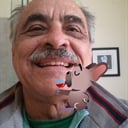On a standard pair of dice, which number is on the opposite side of number 6?
Dice (singular 'die') are cubes that have the numbers 1, 2, 3, 4, 5 and 6 on the faces. The opposite sides on standard dice always add up to seven. Therefore, the face opposite the six is the number one.
The term 'dice' derives from the Old French word 'dé' and the Latin word 'datum', giving it the meaning "something given or played." Over many years, these words eventually evolved into 'dice'.
Dice are some of the oldest game pieces in history. Ancient Greek philosophers, such as Sophocles, claimed dice were invented during their era, but archeological evidence suggests they are much older. Some older societies used bones as early forms of dice to play games.
Archaeologist have found dice made of all sorts of materials, including bronze, porcelain, and marble. Dice have been discovered in Chinese excavations dating to 600 BCE and in Egyptian tombs reaching as far back as 2000 BCE.
Rather than having written numbers on each face, dice feature the appropriate number of dots or pips. It is claimed they are dotted rather than numbered because they were invented long before the introduction of written numerals.
While six-sided dice are most common, there are many other varieties available depending on the game. Unusual shapes used to create dice include an octahedron (8 sides), pentagonal trapezohedron (10 sides), dodecahedron (12 sides), and an icosahedron (20 sides).
More Info:
en.m.wikipedia.org

